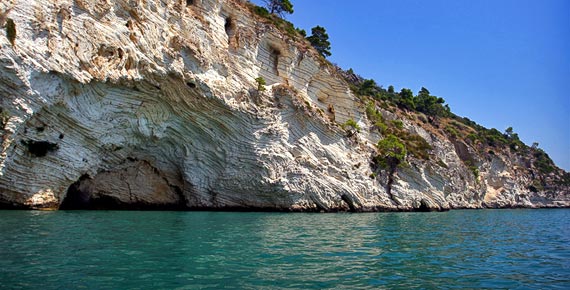
Foggia is the city of the old agricultural traditions. Destroyed by an earthquake in 1731 was then bombed during the Second World War because of strategic military posts located nearby the city.
It was quickly rebuilt in the ‘60s with a poor architectural result. Nevertheless, the main part of the medieval city survived with all its charm.
Not far from the city, an example of the unspoiled beauty of the region is offered by the Monte Gargano promontory. A tongue of land, and right on the tip of it the port city of Vieste with its medieval historic centre dominated by the Castle.
History: Its origins date back to the 1000 A.D. The city’s name comes from the Latin “fovea” (pit) and is related to the tradition to dug holes in the squares to preserve wheat. Since the arrival of the Normans in the 11th century and up to the Second World War, Foggia has been sacked and burned several times therefore many of the ancient monuments and artworks were lost or destroyed.
Overview: The 12th century Cathedral of Santa Maria de Fovea, originally in Romanesque style, has been subject to many rebuilding and restorations. It contains the Icona of the Madonna dei Sette Veli, a Byzantine tablet which represents the patron saint of Foggia.
The Civic Museum is located in the Palazzo Arpi, built on the remains of the Imperial Palace of Frederick II. It contains a collection of modern art but also cultural and archeological work of arts. Built between 1714 and 1725, the Basilica of St Giovanni Battista is considered a place of miracles as it is here that Our Lady of Sorrows ended the cholera epidemic in the 19th century.
The Palazzo della Dogana, was built after the earthquake of the 1731. During the restoration of the Borboni, it was the residence of the Emperor of the two Sicilies. It hosted the Royal Customs for a tax on shepherds connected to the sheep rearing. The tax was abolished after the unification of Italy.
Along the road to San Severo, the baroque Church delle Croci. It is a complex formed by five chapels and an arch of triumph. It worth a visit the Ipogei, the farmer’s market, located east of the city-centre. It is a colourful market full of fresh vegetables and fruits.
Image Flickr Creative Commons courtesy by renatela
